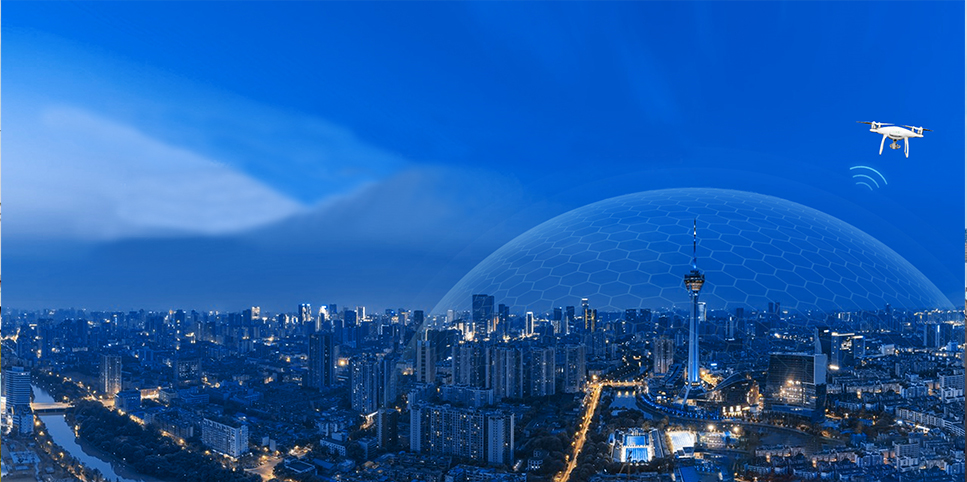Time:2023-04-12Update Time:2023-04-12
If you are interested in our products!
Email us :globalsupport@szmid.com
New anti-drone technologies continue to emerge, such as intelligent responsive interference technology, multi-spectrum threat perception and attack capability, etc. Based on the current development status, the trends in the development of anti-drone systems/technologies are:

1. Directed energy weapons for anti-drone purposes
In the "Black Dart" test, a 30 kW laser weapon system was installed on the side of the "Ponce" amphibious transport dock, and it successfully shot down a “Outlaw” drone. The United States Department of Defense is promoting several tactical laser weapon projects to counter drones, artillery shells, rockets, and missiles. The high-energy laser program is developing a tactical laser of over 100 kW.
India is also developing a 10 kW military laser to counter drones and unmanned equipment. In a test conducted in Hyderabad in India, a laser with the power of 10 kW was used to destroy targets within 800 meters. It is expected that a portable weapon for striking drones and light armored vehicles will be developed based on this laser. The US Army demonstrated its capability in anti-drone laser weapons in April 2016.
2. Anti-drone missiles
QInetIQ and Sula System's COUGAR (Counter Unmanned Arial Vehicle Ground Based Air Defense Add-On Modular Requirements) research project aims to develop a kinetic energy weapon capable of complementing modern supersonic missiles in future land-based air defense systems. The low-cost, uncooled, long-wave infrared guidance head searches and identifies targets before guiding the missile directly to hit the target. Although this interception missile is relatively small, with a length of 1.2 meters and a wingspan of 1.1 meters, and weighs less than 14 kg, its speed when approaching the target is sufficient to cause severe structural damage, providing clear hard-kill effects. The cost of the missile can be reduced to $45,000 as it does not have a warhead, fuses, or safety systems.
In the “Black Dart” test, an AH-64 "Apache" helicopter armed with an AGM-114 "Hellfire" missile equipped with proximity detonators shot down an "Outlaw" drone. The missile was developed by Raytheon to counter the current drone threat.
3. Anti-drone defense system
In 2015, Israel's Rafael company's "Iron Dome" missile defense system proved its ability to intercept drones. Through testing, the "Iron Dome" system demonstrated its ability as a short-range air defense system. The "Iron Dome" system uses its radar to detect and track both human-driven and unmanned aircraft targets. Its TAMIR interception missile intercepts high-altitude and low-altitude targets by direct collision. Rafael's SPyDeR air defense system is a point/area defense system that uses the "Python" 5 short-range air-to-air missile and the "Derby" beyond visual range air-to-air missile, which can also counter drones.
4. Communication link/GPS signal interference
Electronic interference is implemented against enemy drones’ electronic devices operating frequency, wavelength, and other parameters, which will greatly restrict its usage in complex environments. Its onboard detection equipment and data transmission and processing will also be affected, even paralyzed or destroyed, thus disrupting enemy information intelligence chains and destroying or even paralyzing command, coordination, and guidance. Rafael's "Unmanned Aerial Vehicle Dome" anti-drone system can interfere with global navigation satellite system signals, making drones unable to know their own position, thereby unable to return to the takeoff point after losing control.
5. Anti-drone radar
According to a report from Reference News on April 25, 2016, Russia has developed a new type of panoramic surveillance radar that can be used to intercept drones. The system includes the "Outpost" panoramic radar station and "Fly-1" electro-optical component, which can detect ground, surface, and low-altitude targets within 20 km.
The "Black Dart" test in 2015 focused on small-sized drones, which the US Department of Defense called "low, slow, small unmanned aerial systems" (LSSUAS), which are drones weighing less than 9 kg, with speeds lower than 185 km/h, and flying at altitudes lower than 4570 meters. The "Black Dart" test showed that the most promising anti-drone method is a combination of systems, consisting of a radar, electro-optical sensors, infrared sensors, acoustic sensors, and other detectors that make up a warning network. The "Black Dart" test not only tested guns, cannons, missiles, and lasers, but also tested high-power microwave devices, GPS and radio interference devices. However, timely discovery is needed to shoot down small drones, and dealing with clusters of drones is even more difficult. The US Marines are developing low-cost robotic swarms to combat drone clusters. South Korea is studying a new technology that uses sound waves to disrupt drones. It has carried out resonance tests on a key component of the drone-gyroscope, which can output incorrect information and cause the drone to crash.
Anti-drone combat is one of the important combat missions on the battlefield. Anti-drone technology is a natural development trend under the requirement of anti-drone combat missions, and the construction of anti-drone technology systems is also a necessary requirement for the development of anti-drone weapons and equipment systems. Currently, both at home and abroad, relevant studies on weapons and equipment, such as detection, tracking and early warning, direct use of firepower for hard kill against drones, and the use of interference technology for soft kill against drones, are being actively carried out. Although the theoretical and technical research on anti-drone combat is still relatively scattered and incomplete, it has laid a good foundation for the opening and expansion of the professional field of anti-drone technology, and has quickly formed an anti-drone technology system from a theoretical and technical perspective.
Previous: Overview of drone countermeasures
